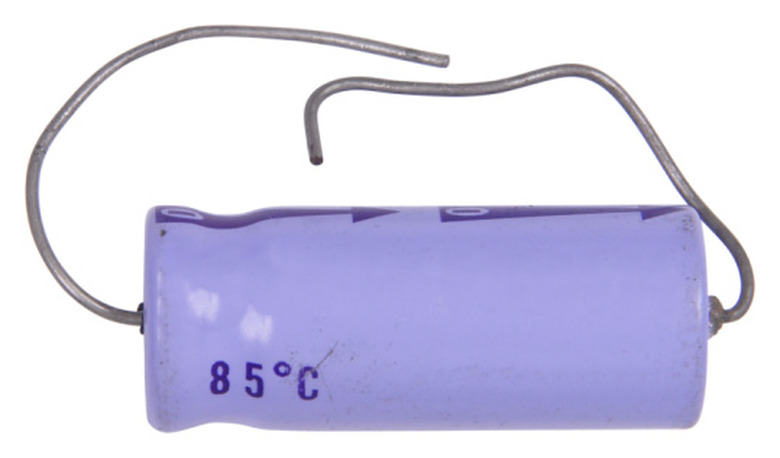How To Test An MFD Capacitor
Testing an MFD capacitor, otherwise identified as a uF or micro farad capacitor, is easy with the right tool. Over the course of their lives, capacitors often become corroded and no longer perform their intended purpose. With a common digital capacitance meter, you can quickly and effectively test whether or not your capacitor is functioning as labeled. If your electronic device has stopped working, testing the capacitors in it is a great place to start to troubleshoot it back to working order.
Step 1
Connect the black, negative lead of your capacitance meter to the shorter of the two terminals on the capacitor. If the terminals are of the same length, then it is not polarized, and you can attach the negative lead to either of them.
Step 2
Connect the positive red lead from the meter to the other of the two terminals on the capacitor.
- Testing an MFD capacitor, otherwise identified as a uF or micro farad capacitor, is easy with the right tool.
- With a common digital capacitance meter, you can quickly and effectively test whether or not your capacitor is functioning as labeled.
Step 3
Adjust the selector wheel on the meter to the next-highest maximum reading than the rating printed on the capacitor. For example, if your capacitor was labeled as 270 uF/MFD, and your meter had a setting for both 200 uF and 2000 uF, you will need to select 2000 uF to get an accurate reading.
Step 4
Read the display screen on the meter. If the value stated is above or below 10 percent of the value printed on the capacitor, then the capacitor is in working condition. If the value on the meter's screen is more than 10 percent above or below the value printed on the capacitor, it is not working as it should, and should be replaced with a properly functioning replacement. For example if the meter read 450uF and the capacitor is labeled 470uF, it is good. But if the meter reads 200uF, and the capacitor is labeled 470uF, it is not working properly
- Adjust the selector wheel on the meter to the next-highest maximum reading than the rating printed on the capacitor.
- If the value on the meter's screen is more than 10 percent above or below the value printed on the capacitor, it is not working as it should, and should be replaced with a properly functioning replacement.
Test A Capacitor With An Ohm Meter
A capacitor is a device that stores electricity, but unlike a battery, which discharges slowly, a capacitor discharges in an instant when it reaches its threshold charge. This behavior has applications in all sorts of electronics contexts. Symptoms include the hum of a garage door opener and its failure to start working or the failure of an air conditioner to cool the room. You can use an ohm meter to test a capacitor. Most multimeters don't have this function, though, but you can still test a capacitor using the voltmeter or ohm meter setting. The first is to remove the capacitor from the circuit. It's usually easy to remove a start or run capacitor – you simply unhook it from its harness and disconnect the wires. That spark, by the way, tells you the capacitor probably isn't dead. At this setting, the meter generates a small current when you connect the meter leads to the capacitor terminals. If you're using an analog meter and the capacitor is good, the meter needle will start at a low reading, and as charge builds up in the capacitor, the needle will climb steadily toward infinity.
- A capacitor is a device that stores electricity, but unlike a battery, which discharges slowly, a capacitor discharges in an instant when it reaches its threshold charge.
- Most multimeters don't have this function, though, but you can still test a capacitor using the voltmeter or ohm meter setting.
